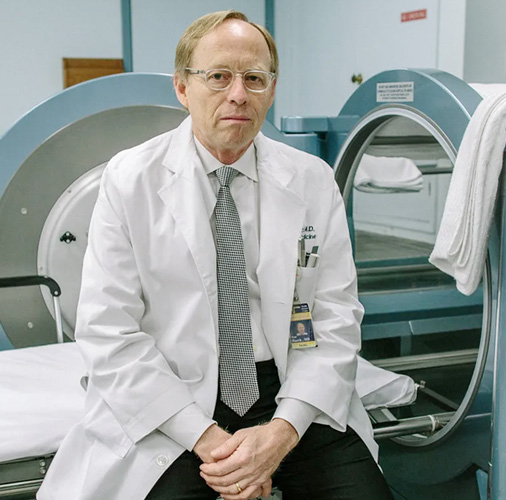Systematic Review & Dosage Analysis of Hyperbaric Oxygen Therapy (HBOT) in Treating Persistent Post-Concussion Syndrome (PPCS)
Author: Dr. Paul G. Harch, MD
Affiliation: Hyperbaric Medicine Unit, Section of Emergency Medicine, Department of Medicine, Louisiana State University Health Sciences Center, New Orleans, LA, USAPubMed Central+2digitalscholar.lsuhsc.edu+2PubMed+2
Introduction
Persistent Post-Concussion Syndrome (PPCS) affects over 15% of individuals who have experienced mild traumatic brain injury (mTBI), leading to prolonged cognitive, emotional, and physical symptoms. Traditional treatment options are limited, prompting exploration into alternative therapies. Hyperbaric Oxygen Therapy (HBOT) has emerged as a potential intervention, but its efficacy has been debated due to varying definitions and treatment protocols.PubMed Central+1Frontiers+1
This systematic review evaluates the effectiveness of HBOT in treating PPCS, focusing on dosage parameters defined by both barometric pressure and oxygen concentration. By analyzing studies through the lens of HBOT as a dual-component therapy—comprising increased atmospheric pressure and elevated oxygen levels—we aim to clarify optimal treatment protocols.Frontiers+2PubMed Central+2PubMed Central+2
Methods
-
Search Strategy: Comprehensive searches were conducted in PubMed, CINAHL, and the Cochrane Systematic Review Database between August 8–22, 2021.
-
Inclusion Criteria: Adult clinical studies published in English focusing on HBOT for mTBI-related PPCS with symptoms persisting for at least three months.
-
Study Selection: Randomized trials and studies reporting symptomatic and/or cognitive outcomes were included.
-
Analysis Framework: Studies were categorized based on HBOT dosage parameters (oxygen concentration and barometric pressure) and classified into Levels 1–5 according to immediate post-treatment outcomes.
-
Quality Assessment: Methodological quality and bias were evaluated using the PEDro Scale.FrontiersPubMed Central+2digitalscholar.lsuhsc.edu+2PubMed+2PubMed Central+2PubMed+2digitalscholar.lsuhsc.edu+2
Results
A total of 11 studies met the inclusion criteria:
-
6 Randomized Controlled Trials (RCTs)
-
1 Case-Controlled Study
-
1 Case Series
-
3 Case ReportsFrontiersen.wikipedia.org+5PubMed Central+5PubMed Central+5
Key Findings:
-
Significant symptomatic and cognitive improvements were observed in patients receiving 40 HBOT sessions at 1.5 Atmospheres Absolute (ATA) oxygen across four RCTs.
-
Positive outcomes were also reported in one study administering 30 treatments at 1.3 ATA air.
-
Mixed results were found at 1.2 ATA air, with one study reporting positive effects and another indicating no significant improvement.
-
A study utilizing 2.4 ATA oxygen reported negative outcomes, suggesting potential adverse effects at higher pressures.
-
All studies had sample sizes of fewer than 75 subjects.
-
Minimal bias was identified in four RCTs, while two exhibited greater bias.PubMed+5Frontiers+5PubMed Central+5PubMed Central+1PubMed+1PubMed+2digitalscholar.lsuhsc.edu+2PubMed Central+2Frontiers
Conclusion
The systematic review indicates that HBOT, particularly at 1.5 ATA oxygen for 40 sessions, is associated with significant improvements in symptoms and cognitive function in patients with PPCS. Lower pressure treatments (e.g., 1.3 ATA air) also show promise, whereas higher pressures (e.g., 2.4 ATA oxygen) may not confer additional benefits and could pose risks.
These findings support the consideration of HBOT as a viable treatment option for PPCS, emphasizing the importance of dosage parameters in optimizing therapeutic outcomes.

